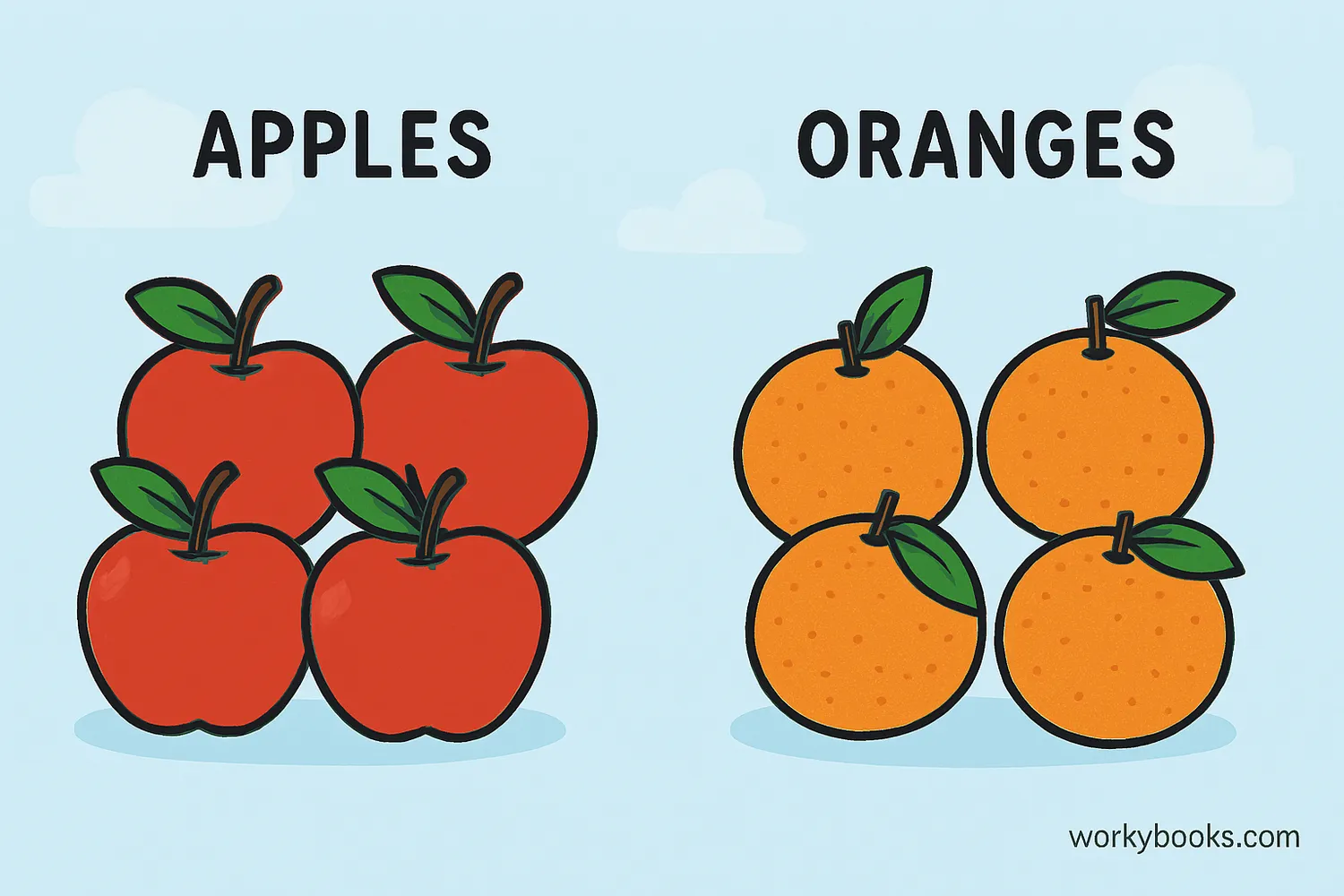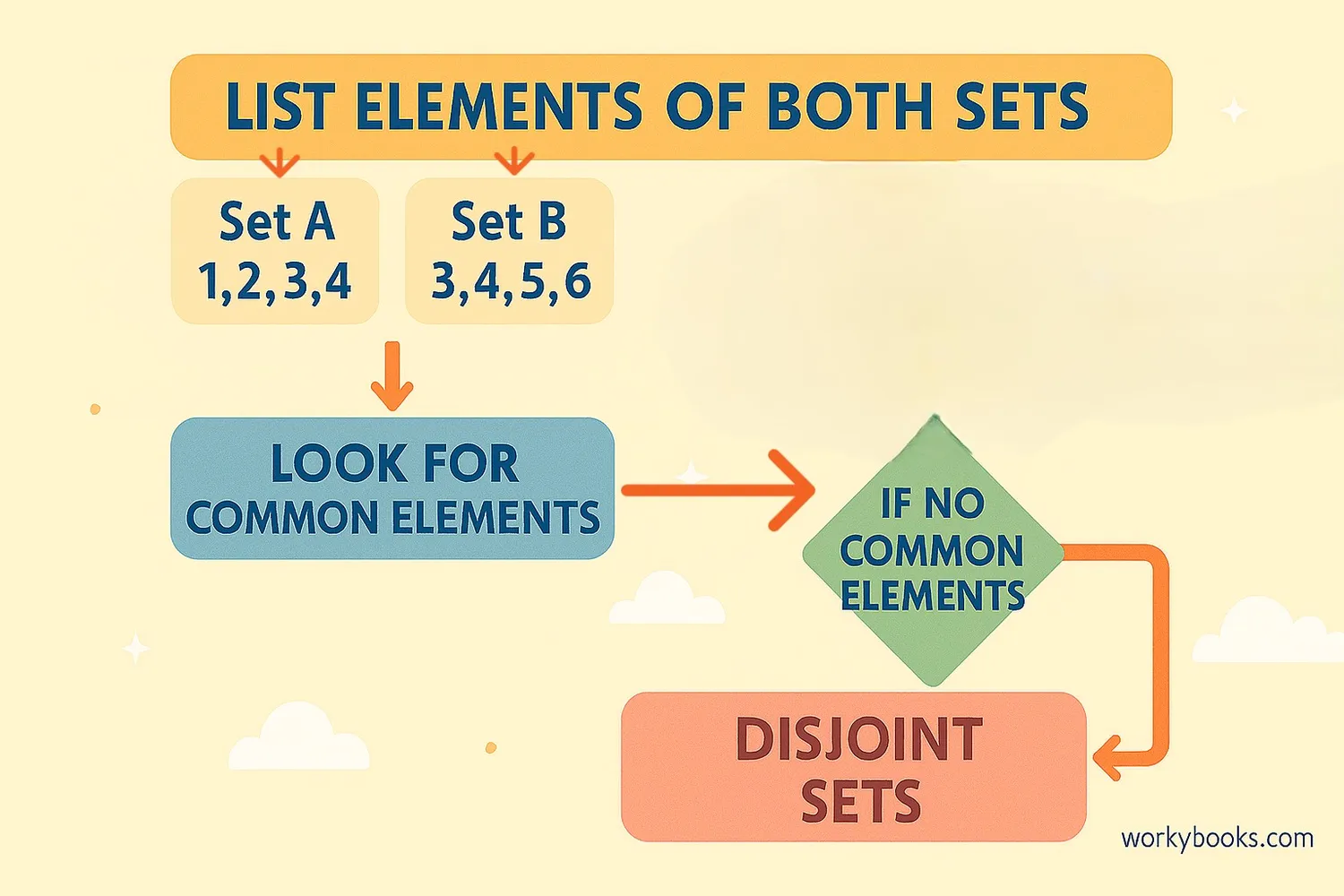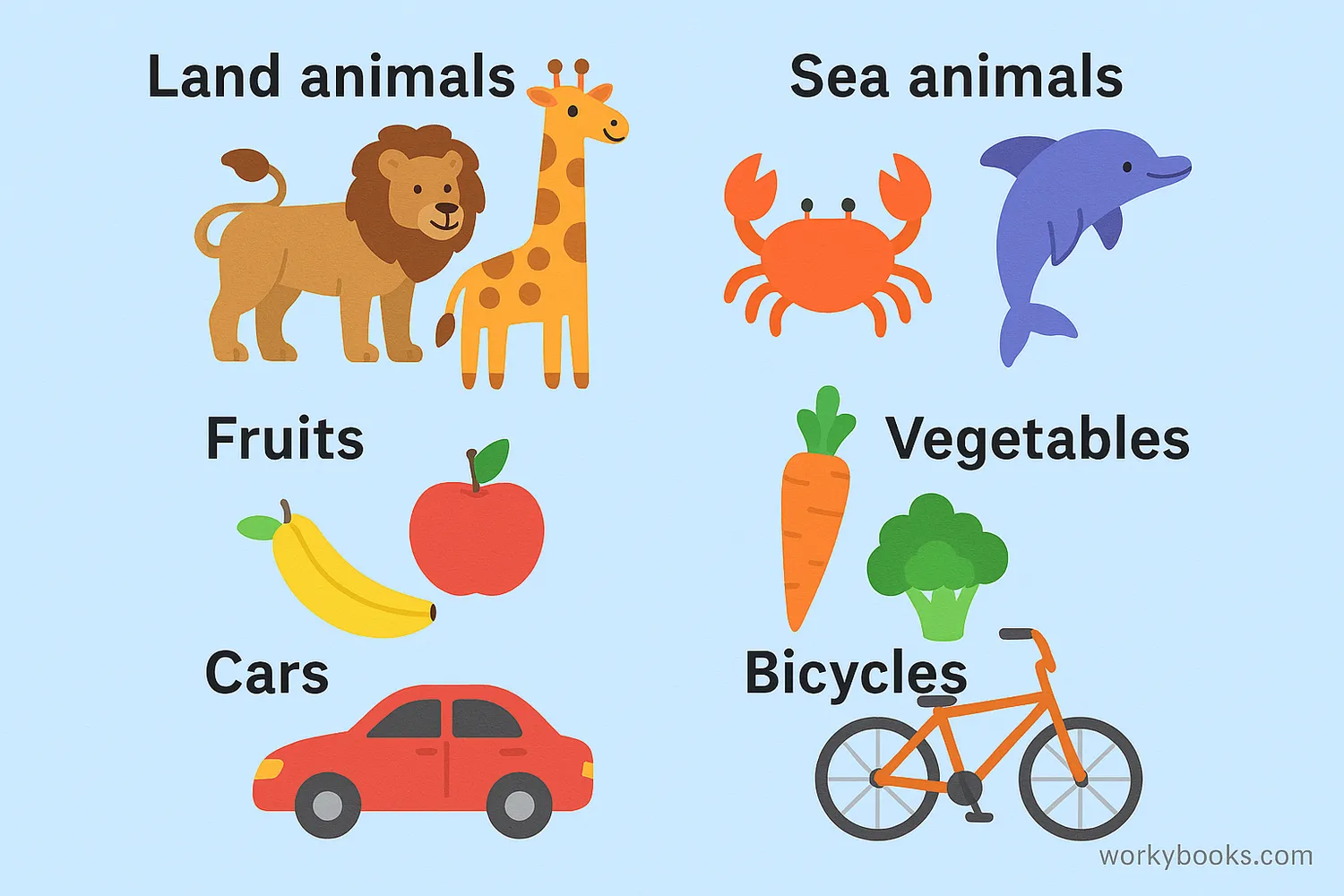Disjoint Sets - Definition, Examples, Quiz, FAQ, Trivia
Learn how to identify sets that don't share any common elements
What are Disjoint Sets?

Disjoint sets are special groups that don't share any members. Imagine you have two baskets - one with apples and one with oranges. Since no fruit belongs to both baskets, these are disjoint sets.
In math terms, two sets are disjoint if their intersection is empty. That means there are no elements that belong to both sets at the same time.
For example:
- Set A = {1, 2, 3}
- Set B = {4, 5, 6}
Key Concept
Disjoint sets are also called "mutually exclusive sets" because they don't share any elements.
How to Identify Disjoint Sets

Identifying disjoint sets is easy when you know what to look for:
Step 1: List all elements in each set
Step 2: Look for any elements that appear in both sets
Step 3: If you find no common elements, the sets are disjoint!
Let's practice with an example:
Set C: {dog, cat, hamster}
Set D: {eagle, sparrow, owl}
Do these sets share any animals? No! So they are disjoint sets.
Remember
If two sets have at least one element in common, they are NOT disjoint sets.
Venn Diagrams of Disjoint Sets
Venn diagrams are perfect for visualizing disjoint sets! They use circles to represent sets:
For disjoint sets:
Disjoint Sets
When circles overlap, it means the sets share some elements and are not disjoint.
Diagram Tip
In Venn diagrams, disjoint sets are always shown as separate circles with no overlapping areas.
Real-World Examples

Disjoint sets are all around us! Here are some examples from everyday life:
Land & Sea Animals
Set A: {Lion, Elephant, Giraffe}
Set B: {Shark, Dolphin, Octopus}
Fruits & Vegetables
Set C: {Apple, Banana, Orange}
Set D: {Carrot, Broccoli, Potato}
Vehicles
Set E: {Car, Truck, Bus}
Set F: {Bicycle, Scooter, Skateboard}
Can you think of your own examples? Try making sets for:
- Things that are red vs things that are blue
- Summer clothes vs winter clothes
- Breakfast foods vs dinner foods
Real-World Tip
Disjoint sets help us organize information and see how different groups relate to each other.
Disjoint Sets Quiz
Test your knowledge with this 5-question quiz. Choose the correct answer for each question.
Frequently Asked Questions
Here are answers to common questions about disjoint sets:
Set Theory Trivia
Discover interesting facts about sets and mathematics:
Origin of Set Theory
Set theory was created by German mathematician Georg Cantor in the 1870s. He developed it while studying mathematical infinity and different sizes of infinite sets.
Sets in Computers
Set theory is the foundation of computer databases. Every time you search for information online, you're using operations based on sets and their relationships.
Infinite Sets
Some infinite sets are larger than others! The set of whole numbers is smaller than the set of real numbers, even though both are infinite. This was a groundbreaking discovery.
Sets in Daily Life
We use sets every day without realizing it! When you organize your toys into groups, sort laundry, or arrange books on a shelf, you're creating sets.





